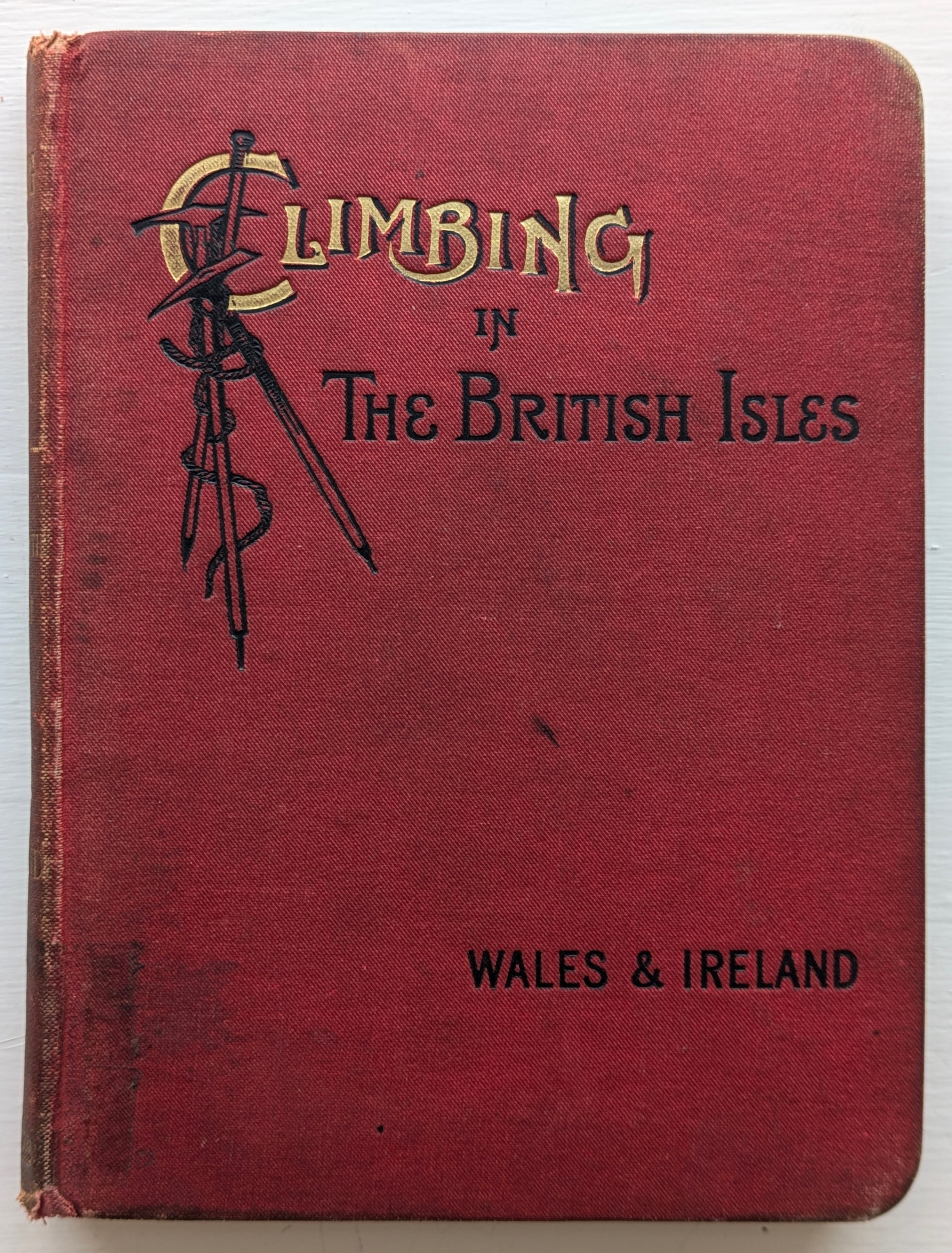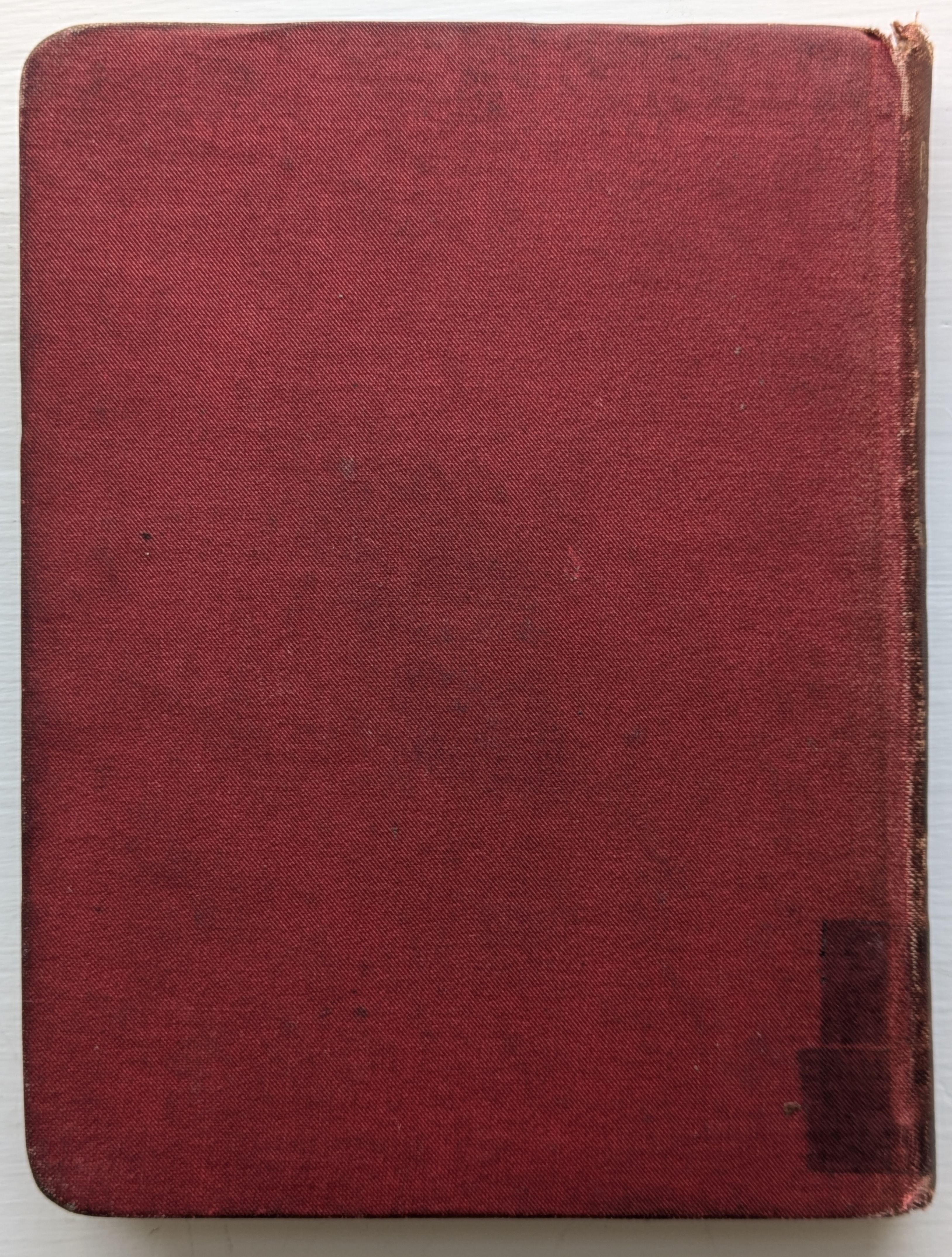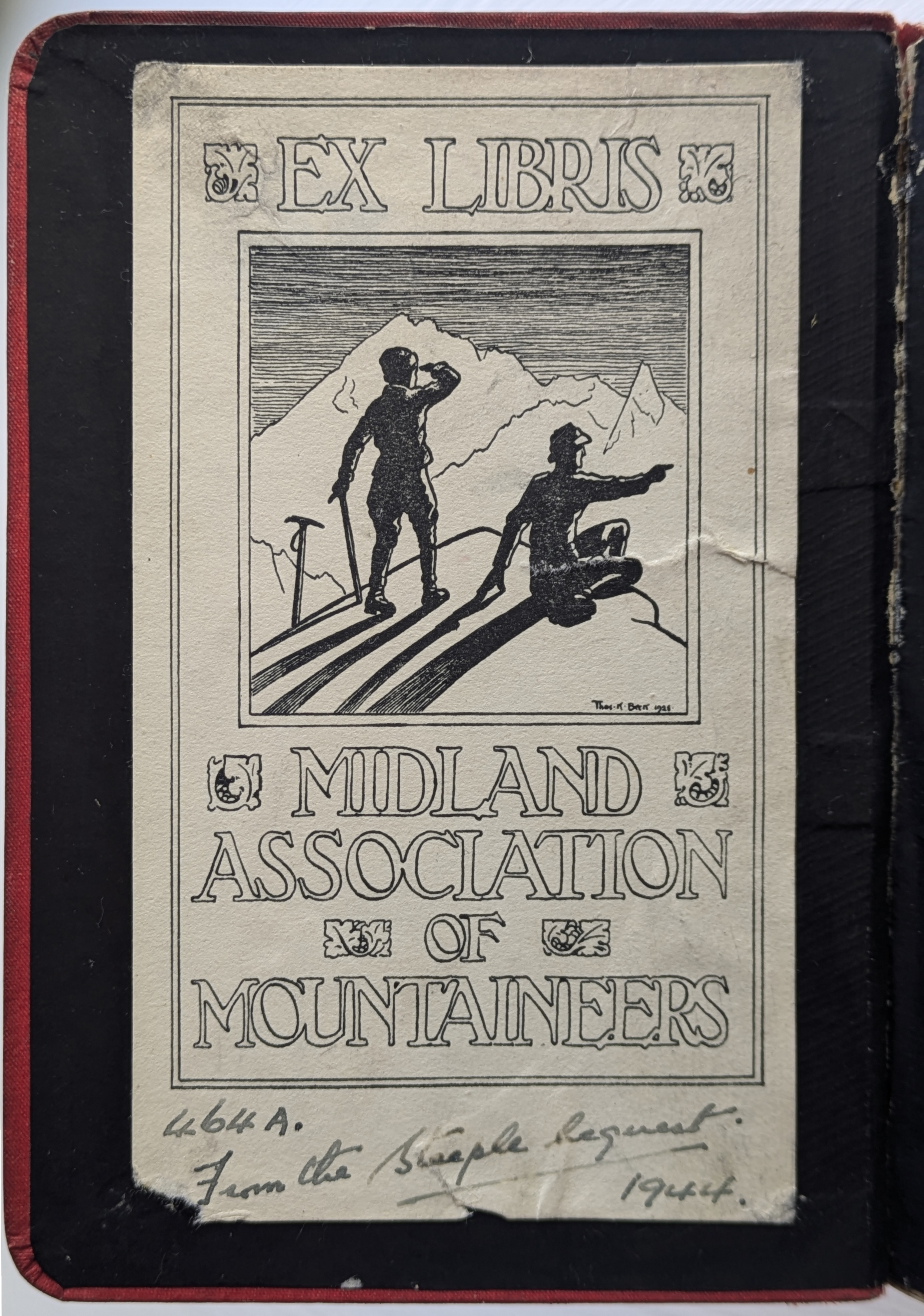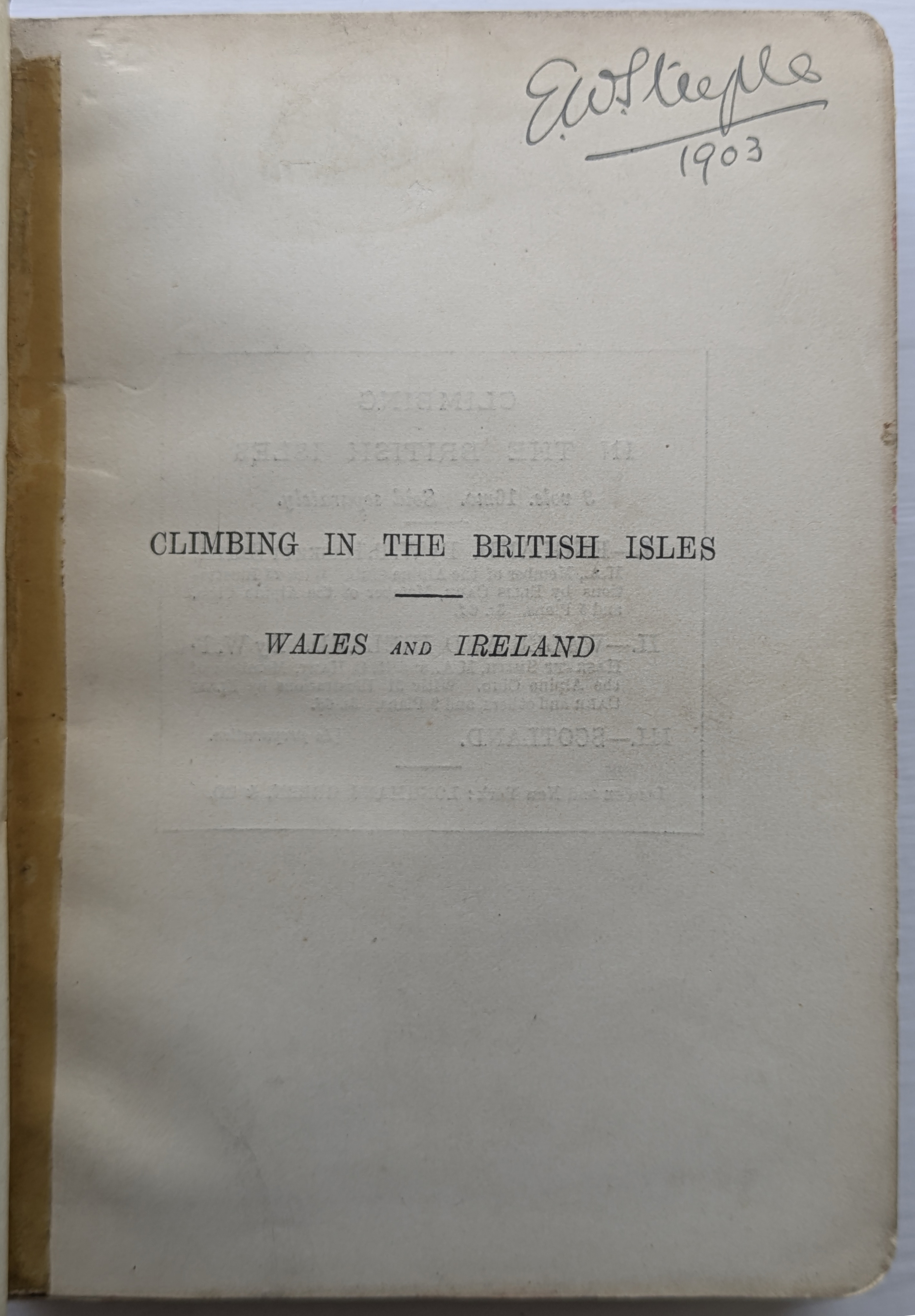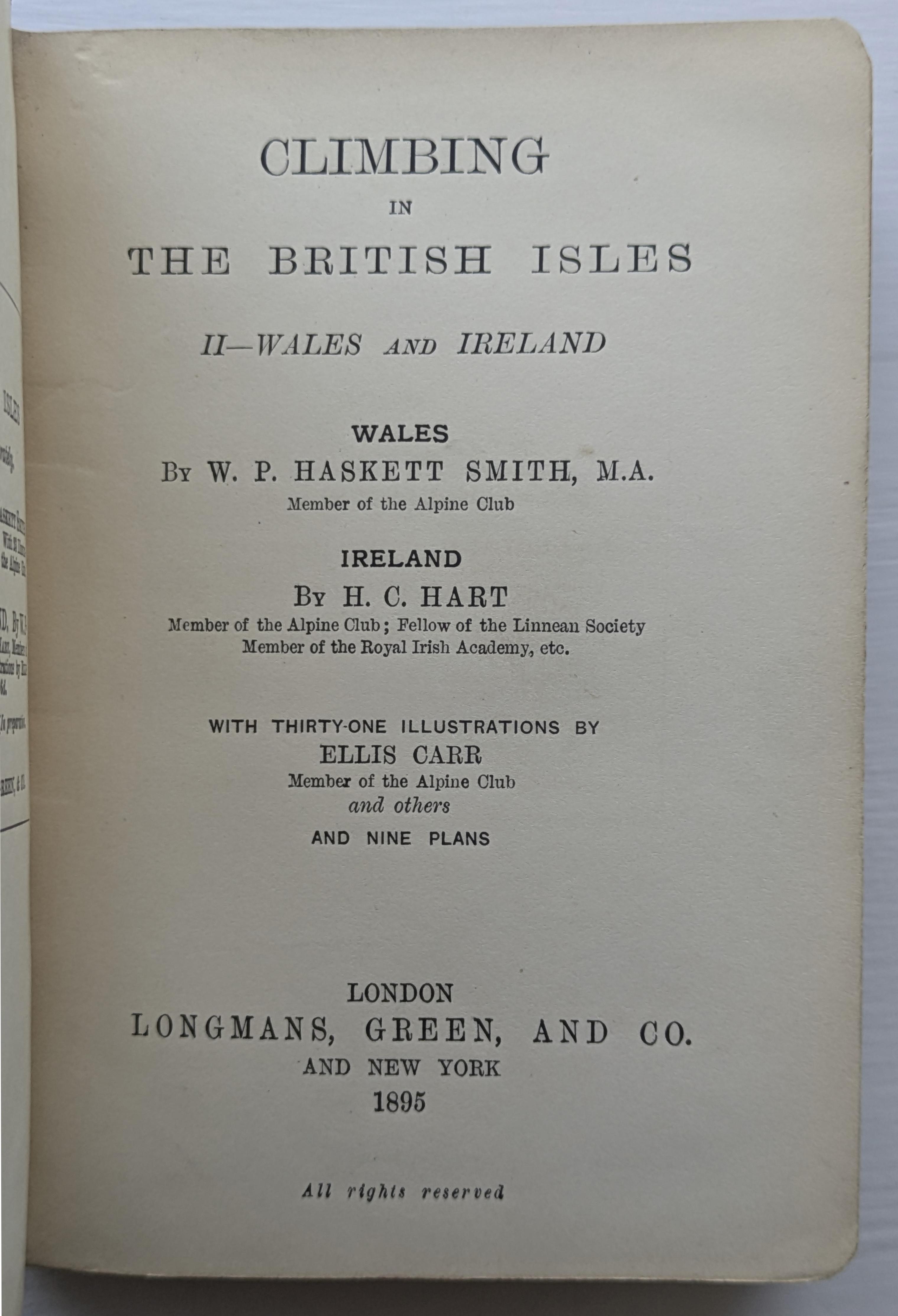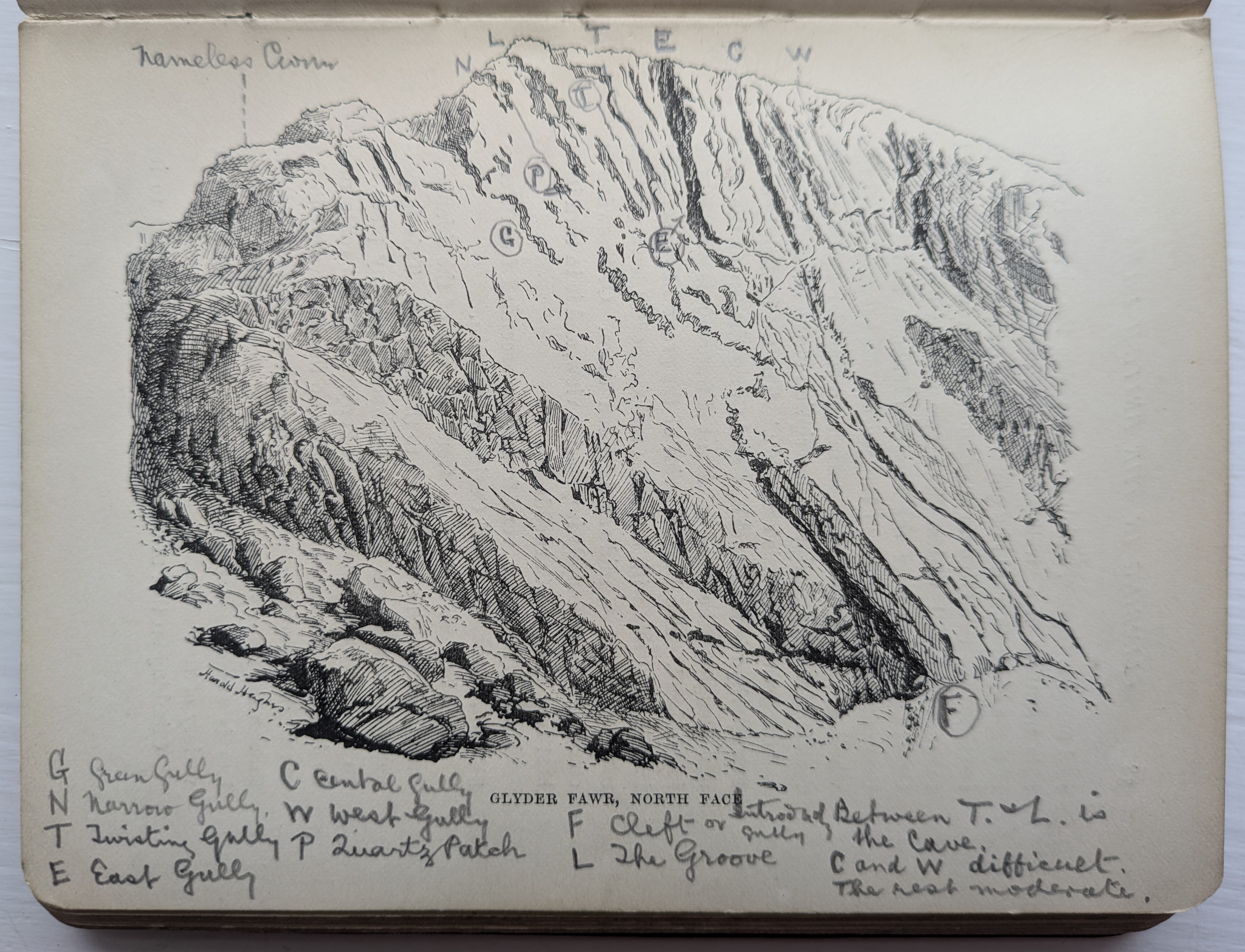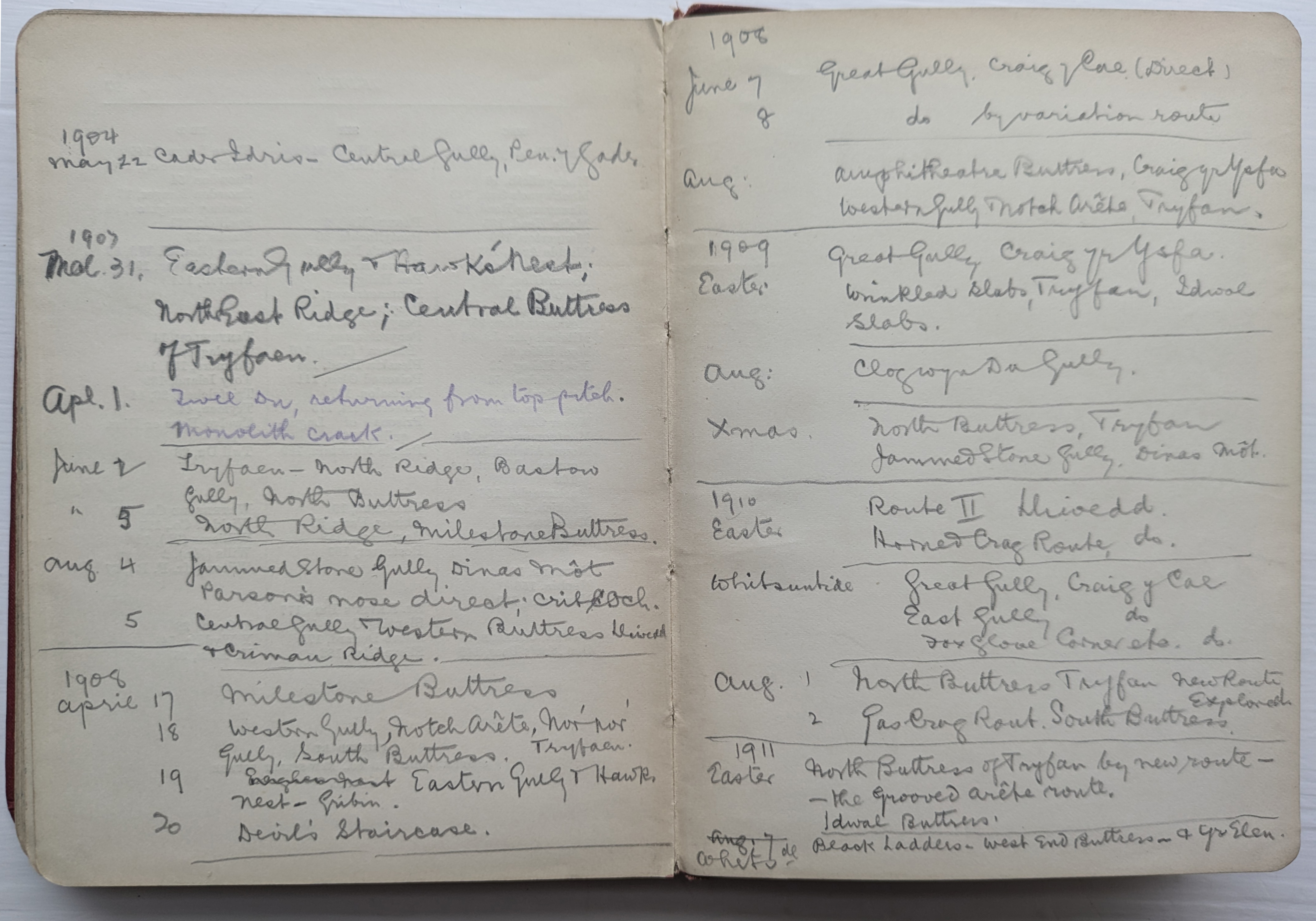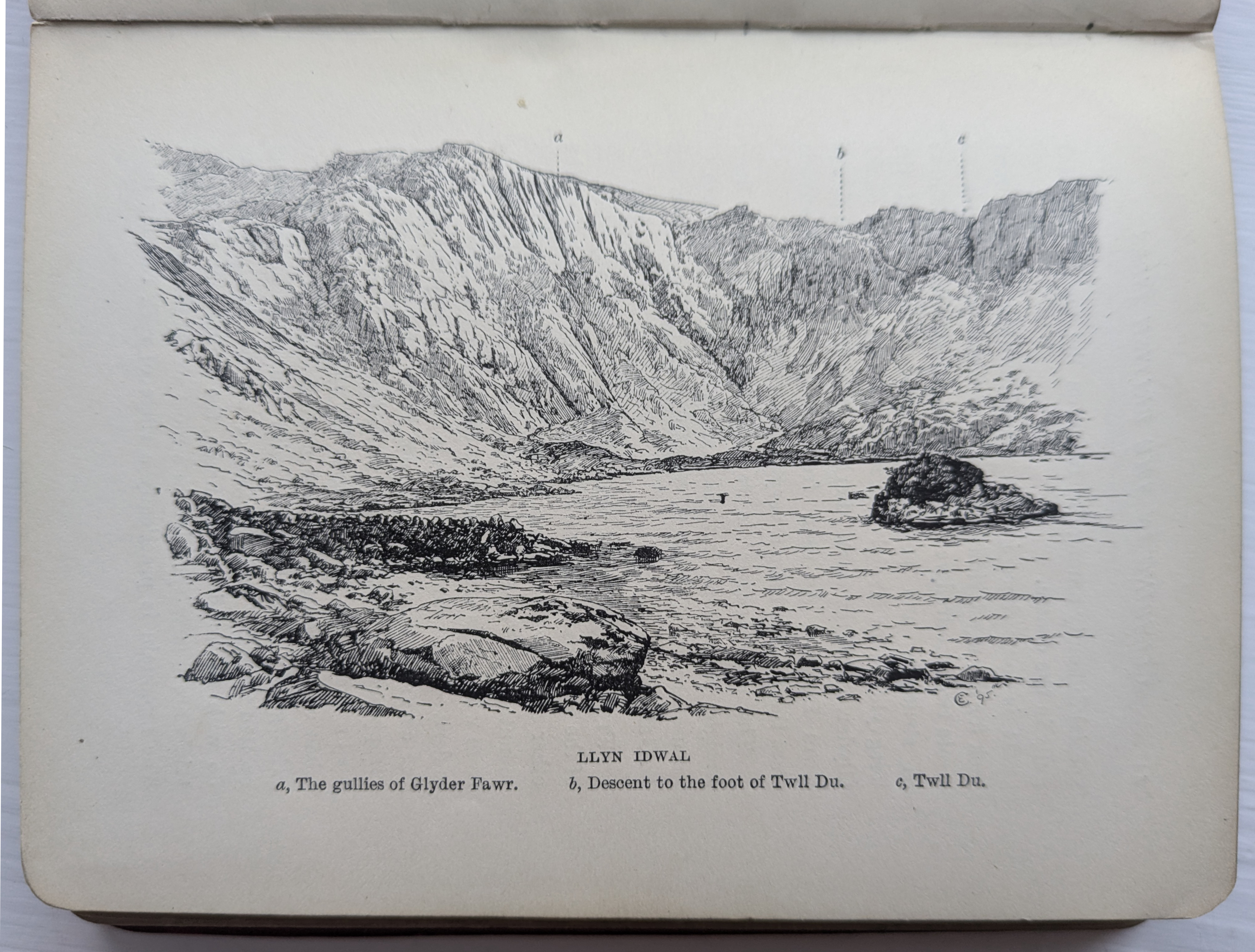I’m gradually putting together a collection of the Rock Climbing guidebooks for Wales and thought I’d put together some blog posts looking at interesting and notable guides from the collection. The guidebook “Climbing in the British Isles: Wales & Ireland” is possibly the first proper climbing guidebook to Welsh Climbing published. The guidebook is the succesive volume to Climbing in the British Isles: England which is considered in Alan Moss’s Collector’s Guide to be “The progenitor of all subsequent British guidebooks.”
Haskett Smith, the author of the Wales section, was an early Rock Climber pursuing Rock Climbing for it’s own sake and often referred to as the “father” of rock climbing; though his mentor Frederick Bowring may well have claim to this title. Haskett famously was the first ascentionist of Napes Needle in 1886, solo, and it’s ascent is considered by many as the birth of Rock Climbing in the UK with the iconic summit photo on the pinnacle having captured the imagination of the masses. He first explored the local Welsh cliffs whilst attending a uni reading party at Aber.
The guidebook is wordy by modern standards, but does serve as a usable guide for visiting climbers, including notes on where to stay, hand drawn maps and many beautiful sketches of the cliff faces by Ellis Carr. The sketches are principally artistic, with the climbing lines described in the text, but a few illustrations include annotations marking the lines of gullies and buttresses; most notably on Cadair, Lliwedd and Idwal.
In the preface Haskett dispels the casual bigotry of the “groundless terror of the Welsh language” which apparently kept many away.
In spite of it’s apparent complication the language is so simple and systematic that anyone can learn enough in a quarter of an hour to enable him to pronounce with ease and moderate accuracy any place-name with which he is likely to meet.
Haskket Smith
Haskett’s description of the various cliffs include the names of the surrounding features, with some translated to English. It’s part historical record with records of early attempts, first ascents many climbing accidents, near misses and deaths. The range of areas covered is impressive, including mentions of Anglesey, Penmaenmawr, Denbigh. The bulk of the guide focuses on the mountain areas from Eryri down to Cadair and the Rhinogs. South Wales is dismissed as “scarcely worth while to enumerate the southern counties, as all alike are destitute of climbs, except upon the sea cliffs.”
It’s an interesting read with first hand accounts of Haskett’s and other’s ascents, including first known female ascents of routes. From the descriptions, attitudes to ethics, ascent style, and ropework techniques come through which make for interesting reading with occasional asides for local stories and myths. Old copies go for extortionate sums online but I picked up my copy not long ago for less than a tenner in a charity shop, there’s some links below to an eBook version via the Gutenberg project and a scanned PDF copy as due to it’s age it’s now out of copyright.
Title: Climbing in the British Isles: Wales & Ireland
Author(s): Haskett Smith & H. C. Hart
Year: 1895
Publisher: Longmans, Green, and Co.
Edition: 1st
Binding: Hardcover
ISBN: n/a
Condition: Good
Personal Notes: My copy has an Ex Libris Midland Association of Mountaineers sticker on the inside cover. Longman is the oldest commercial publisher founded in 1724 by Thomas Longman. E.W Steeple was a Scottish Mountainering Club Author and Editor to the Island of Skye Climbing Guidebook. Black end papers rather than the cream papers mentioned in Moss.
Name Inscription: E. W. Steeple 1903
Other Markings: 464a. From the Steeple Bequest.1944. Extensive pencil notes to rear and some pencil notes throughout text.
Height: 156mm
Width: 116mm
Pages: 197
Project Gutenberg Link: https://www.gutenberg.org/cache/epub/37502/pg37502-images.html
Internet Archive PDF Scan: https://dn790000.ca.archive.org/0/items/climbinginbritis02hask/climbinginbritis02hask.pdf
